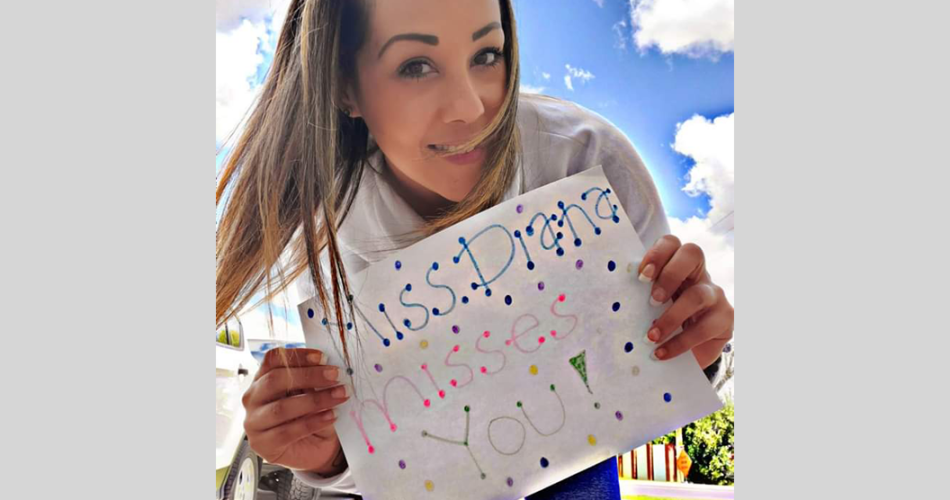Due to the onset of COVID-19, many early childhood education programs have shifted away from offering in-person activities to facilitating children’s learning from a distance, in the home setting. This change in services has created a multitude of difficulties and opportunities. Here are some ideas from two child care providers serving families in tribal and urban communities.
Hands-on activities at home
At Tsaile Public School Preschool in Tsaile, serving families at home meant providing a weekly packet of learning activities for families as internet access was a barrier to using some of the virtual platforms. The paper and pencil packet approach worked to ensure equitable access for all.
Director Byron Bolen explained the packets were “designed to provide families with the tools necessary to best support their child’s overall growth and encourage learning through play.”
At Skyline Preschool in Chandler, teachers dropped off a children’s book and activity ideas for families at the front door of children’s homes.
 Using virtual platforms
Using virtual platforms
Although nothing can replace the live learning environment, for many programs, web platforms provide an alternative when an in-person setting isn’t an option. Virtual platforms such as Zoom and Google Meets are used to host live meetings so children can communicate with their peers. Social media platforms are used to post recordings, such as book readings.
For Natasha Gillen, director at Skyline Preschool, the goal was to provide a sense of consistency and routine for children. “I often posted videos of stories or check-ins from inside the classroom at school to promote normalcy for the children. Daily, we were doing a quick lesson on colors, shapes, science, math or language and a story to add to the lesson.”
Even now as Skyline Preschool has reopened, teachers continue to post activities such as science experiments from inside the classroom on the program’s YouTube channel, for children who are still at home with their families.
Ongoing communication with families
Now more than ever, consistent communication with families helps to support children’s development as many families are taking a more active role in their children’s early learning. At Tsaile Public School, teachers set up daily phone calls or Zoom calls with families to provide support and instruction.
At Skyline Preschool, families send photos of the children doing activities at home. Gillen noted this regular communication “helps families feel like they are not alone right now. They have a community to support them.”
Documenting children’s learning
Regular communication with families can also support continued documentation of children’s learning, even as they are away from the classroom. At Tsaile Public School, teachers use their daily conversations with families to collect anecdotal notes of children’s growth and development. These anecdotal notes are entered into the program’s child assessment software, Teaching Strategies Gold.
Thinking about incorporating similar ideas? Here are a few tips to get started:
- Ask families– Both Bolen and Gillen advised talking with the families you serve to determine your approach to supporting children’s learning at home. Gillen explained, “We started with a survey to find out who and how they were accessing the internet or if they needed other forms of engagement.”
- Go for it– Don’t be afraid to get started. Gillen says, “Start small if you don’t know where to start. You can build on it as you go and as you see how your families are interacting.”
- Keep documentation going–Regardless of the software or system you use to document children’s development, consider the ways your communication with families can support documentation.
Resources around the web
For early educators:
- Child Care Exchange’s From Surviving to Thriving: Creating a Way Forward in Challenging Times video series provides inspiration, support and practical advice including tips for using technology and engaging families.
- NAEYC has a wealth of resources for early educators on their website, including A Preschool Teacher in China Shares her virtual teaching experiences
For families –activities for learning at home:
- Brookes Publishing offers a list of 24 at-home learning activities for young children
- PBS Kids provides a wealth of ideas for learning at home on their Coronavirus Resources for Parents page
